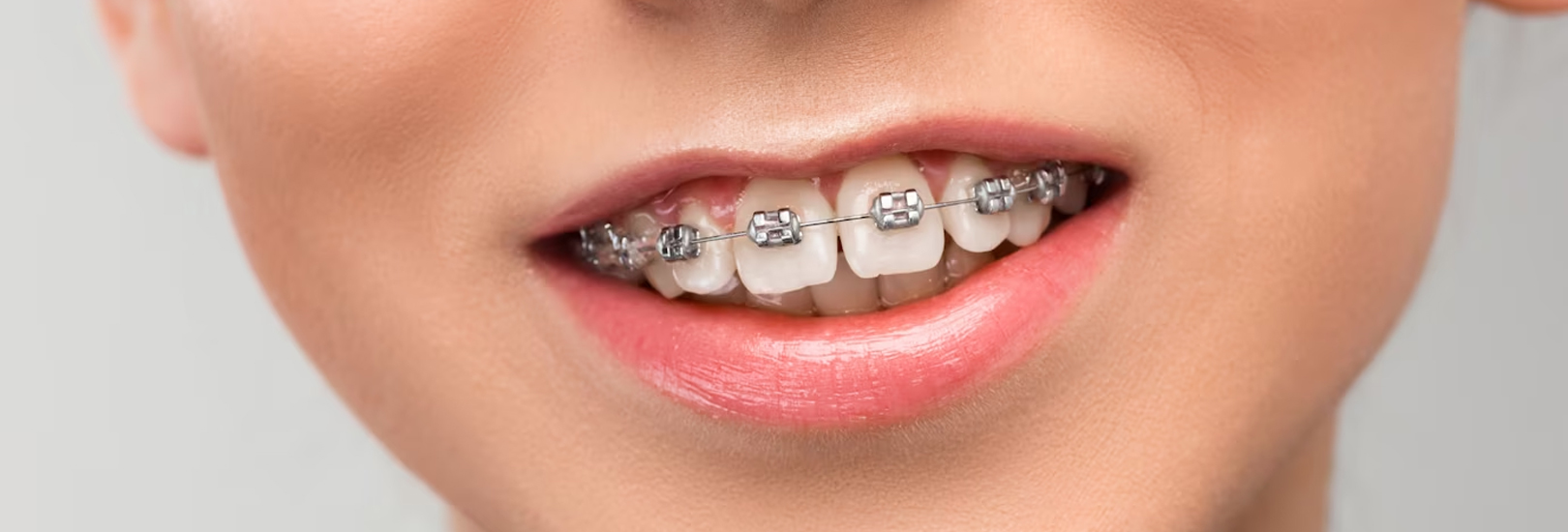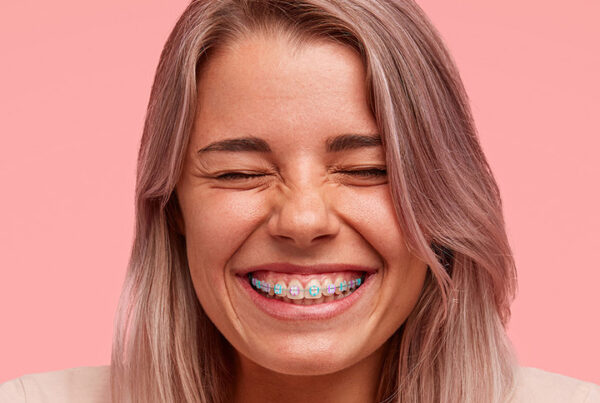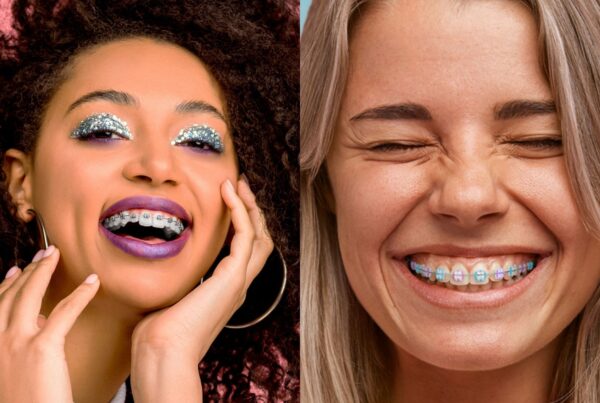- What is an Overbite?
- Overbite Braces
- Why Overbite Braces Are Important
- Types of Overbite Treatments with Braces
- Overbites vs Overjets
- Can Aligners Like Clear Aligners Be Used To Correct Overbites And Overjets?
- How Long Do Braces Last For An Overbite?
- Overbite Classes
- The Right Treatment for You or Your Child
An overbite is one of the most common and recognizable orthodontic problem. It can also cause health and psychological issues, so it’s an orthodontic condition that is often treated earlier rather than later. The type of overbite braces, treatment methods, and treatment time depend on the severity of the case.
What is an Overbite?
An overbite is when a person’s upper teeth overlap their bottom teeth and are typically a result of an overdeveloped upper jaw or underdeveloped lower jaw. Orthodontists and dentists refer to overbites as a type of malocclusion. There are two types of overbite, vertical overbite or horizontal overbite. A vertical overbite also known as overjet is where the top teeth overlap the bottom and a horizontal overbite has the top teeth protruding over the bottom teeth. Some patients can have signs of both.
An overbite can further be classified as being dental or skeletal.
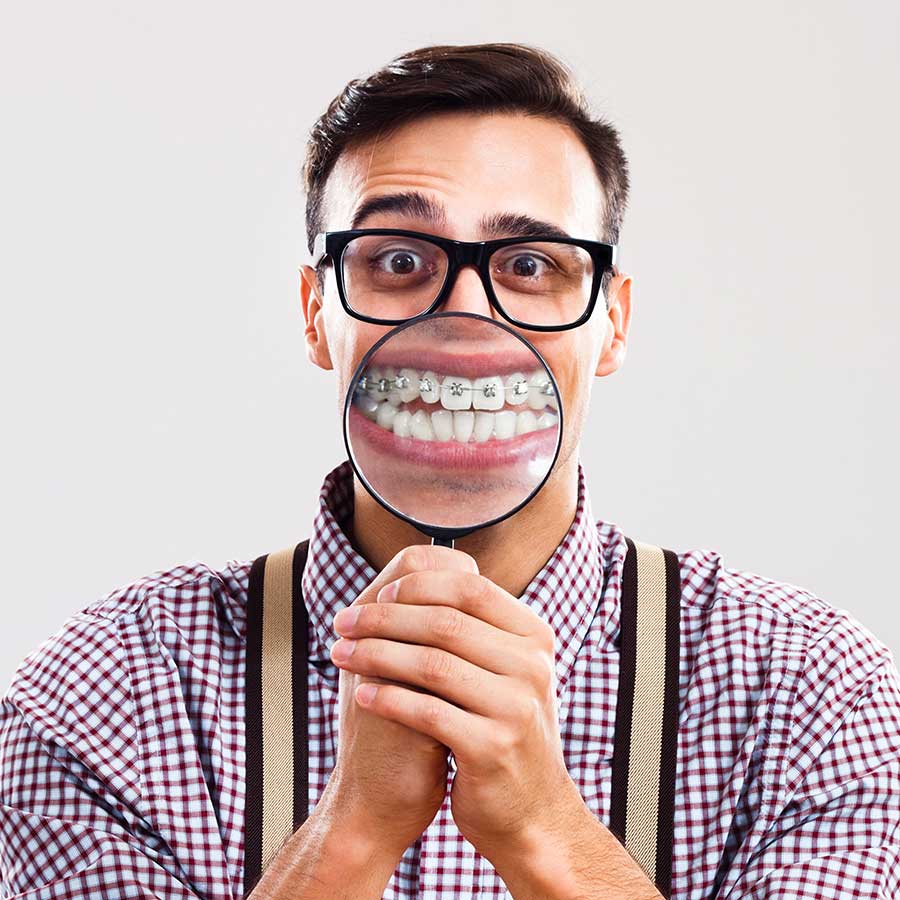
A dental overbite is when the teeth are in the wrong position and skeletal means the overbite caused by the Jaw. Overbites are the most common dental disorder in children.
There are different methods to treat overbites. If a child has an overbite, it is recommended that it should be treated as soon as possible before the child’s jaw and bones stop developing. Some ways that overbites are treated include overbite braces headgear, elastics or other appliances. If you’re an adult and have an overbite, there are many treatment options like Clear Aligners and various types of braces that can be used to treat your overbite.
Overbite Braces
Overbite braces can help move your teeth into the correct position. Like regular braces, overbite braces are placed over your teeth and they slowly move your teeth over the time. Eventually, your front teeth and the bottom teeth gets aligned, fixing your overbite problem.
In most cases overbites can be identified in children by the age of six years old and the treatment for an overbite begins between the ages of eight and fourteen while a child is still in the developmental stages. Most children wear overbite braces for twelve to thirty months depending on the severity of their overbite.
An overbite must be fixed right away because it can cause future oral health issues and make it hard to breathe, swallow, eat, or speak.
Why Overbite Braces are Important
Overbites can cause various kind of oral health problems if left untreated. Severe overbites can cause various oral health problems including tooth decay, gum disease, jaw pain, and joint problems, tooth loss, tooth enamel issues, and trouble speaking and chewing. Overbite braces will also help realign your teeth, giving you a healthy smile.
If an overbite remains untreated, it may cause major problems in the future, resulting in possible permanent damage. If overbite is left untreated, it sometimes requires surgery to fix, which can be extremely expensive.
Types of Overbite Treatments with Braces
Braces are the most common form of treatment for people with dental overbites. However, skeletal overbite will require a surgery. There are different types of braces options that can fix a dental overbite, these options include:
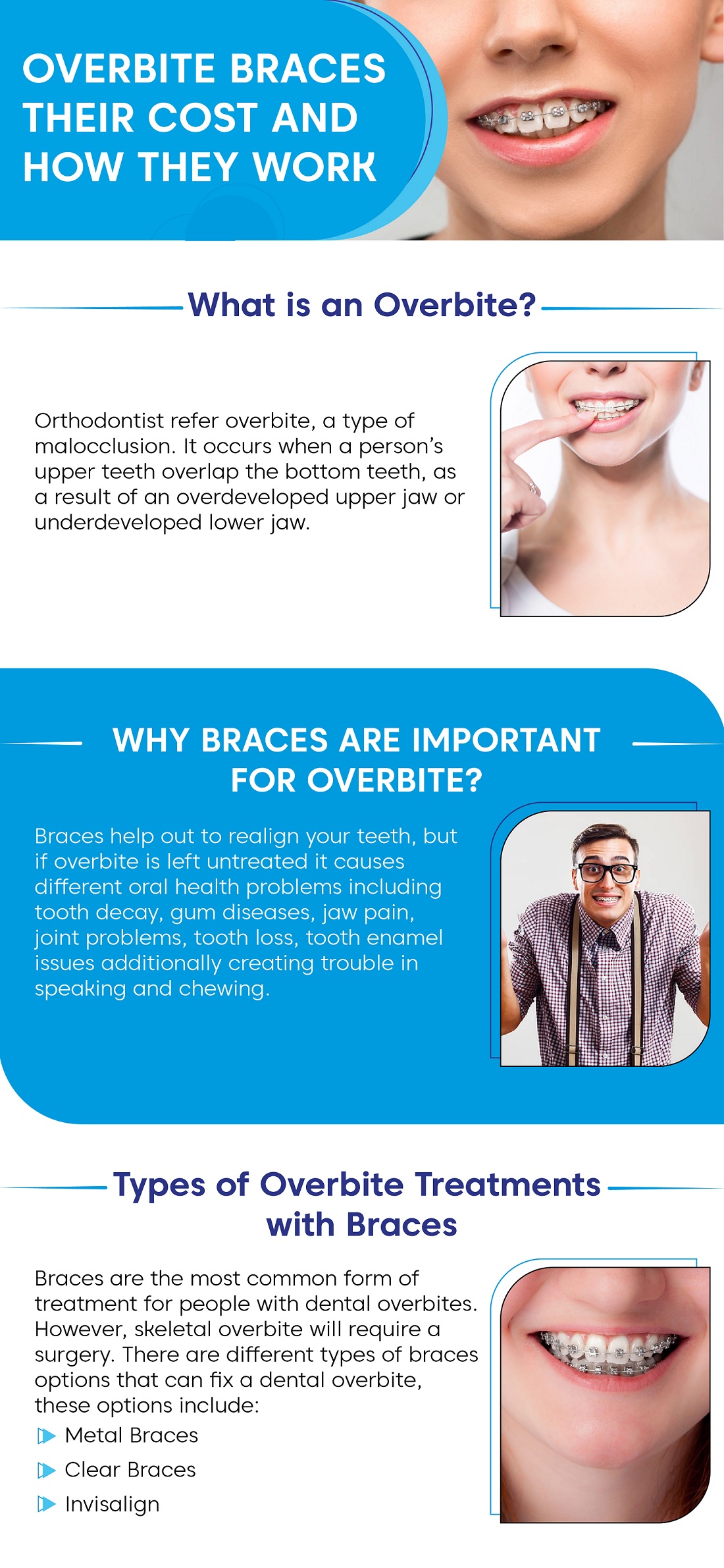
Overbites vs Overjets
While the people use these words interchangeably for a similar condition but they both are different. Overbite is the overlapping of lower teeth with upper teeth while the overjet is the upper teeth protruding past the bottom teeth at some angle.
Can Aligners Like Clear Aligners be Used to Correct Overbites and Overjets?
Aligners like Clear Aligners can be used to minor to moderate overbites and overjets. They are not supportive enough for the correction of severe overbites.
How Long Do Braces Last for an Overbite?
There is not a standard time period defined for the braces to correct an overbite. It varies person to person and case to case. But usually braces last somewhere between six months and two years. However, some serious cases can take even longer. If you are prescribed with a retainer then make sure that you wear it regularly to avoid the teeth shifting out of place.
Overbite Classes
There are 3 different classes of malocclusion or misalignment of teeth.
Class 1: Neutrocclusion
This is the most common type in which upper teeth overlap the lower teeth in a normal bite. In addition to neutrocclusion, a patient typically has other problems as well such as gaps or teeth overcrowding.
Class 2: Distocclusion
In this class of malocclusion, the upper jaw and teeth severely overlap the lower jaw and teeth. During this misalignment, the front teeth typically protrude and may also be positioned over the centre teeth in the lower jaw. This is also called buck teeth.
Class 3: Mesiocclusion
When the lower front teeth are more prominent than the teeth in the upper front of the mouth, it is called mesiocclusion. It is typically diagnosed when a patient’s lower jaw is larger than their upper jaw or where the upper jaw is shorter than the lower jaw.
The Right Treatment for You or Your Child
The type of braces you choose will depend on the severity of your overbite as well your own dental hygiene needs. After your orthodontist at Orthodontic Experts examines your teeth and your jaw position, they will determine the best route to take for your treatment. X-rays will be taken to get a better understanding of the alignment and positioning of your jaw and teeth, and your orthodontist will recommend that is the best option for you.
If you have a child who has an overbite, it is best that you get treatment for the overbite while your child is still young and his or her jaw is still developing. If you risk waiting until your child has stopped growing, you risk permanent damage that can result in lifelong pain and/or discomfort for your child. Overbite braces work similarly to any type of braces and will help reposition an overbite or any misaligned teeth.
To get the best overbite braces for you or to schedule a no-cost consultation at Orthodontic Experts, you can give us a call or fill our online form for a free initial examination to identify the best treatment option for you.


